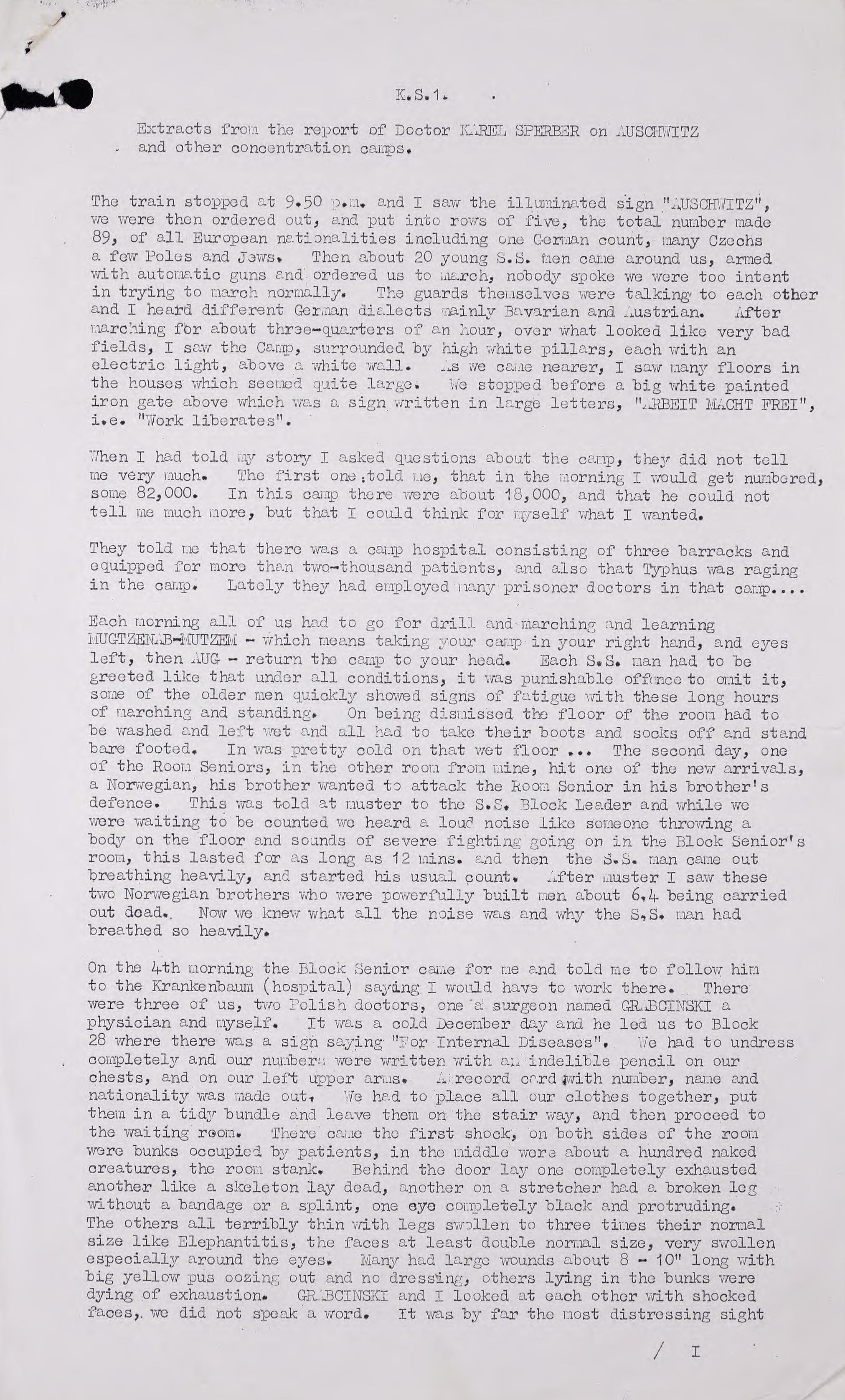
Our latest “Document of the Week” was chosen by our Senior Curator, Dr Charlie Hall. It comprises a report written by Dr Karel Sperber, a Jewish physician from Czechoslovakia who spent over two years in Auschwitz, where he was forced to assist Nazi doctors, including Joseph Mengele and Carl Clauberg, with their cruel human experiments.
Sperber fled Czechoslovakia in 1939, following the German invasion, and came to Britain where he worked as a ship’s doctor on a cargo vessel. When that ship was attacked by a German cruiser, Sperber became a Prisoner of War (POW). Because he was Jewish, the Nazi authorities transferred him to Auschwitz in December 1942, in violation of the Geneva Convention on the treatment of POWs.
In January 1945, Sperber took part in the westward death march away from the advancing Soviet armies. He ended up at Buchenwald concentration camp where once again he worked as a physician in the camp hospital. Eventually, he escaped and was found by American troops in April 1945.
This report, which he compiled after the war, was submitted to British war crimes authorities and subsequently used as evidence at the Nuremberg Trials. It offers a powerful and comprehensive account of conditions in the Third Reich’s most notorious concentration and extermination camp. Sperber’s insights were only possible due to his status as a camp doctor, a role which also ensured his survival.
Where to find this document
This item comes from our primary source collection, Prosecuting the Holocaust: British Investigations into Nazi Crimes, 1944–1949. Comprising over 180,000 images drawn from files at The National Archives (UK) and the United States Holocaust Memorial Museum, this collection provides a detailed account of British efforts to bring Nazi criminals to justice after the Second World War.
The collection not only sheds light on almost every aspect of the Holocaust, from the concentration camp system to the mass murder of the “incurably sick” in psychiatric hospitals, it also gives a voice to the victims of these atrocities. Visit the collection page to learn more.
